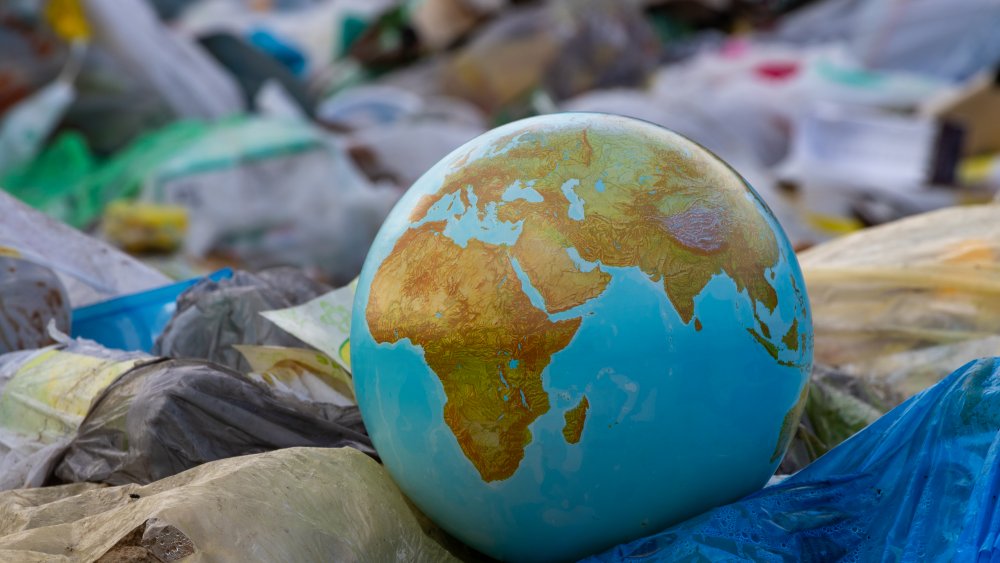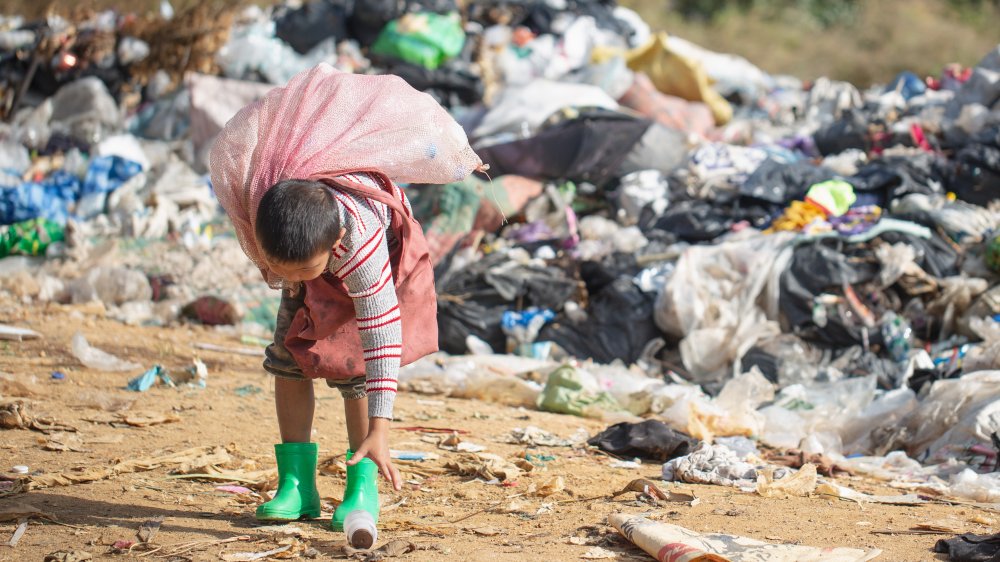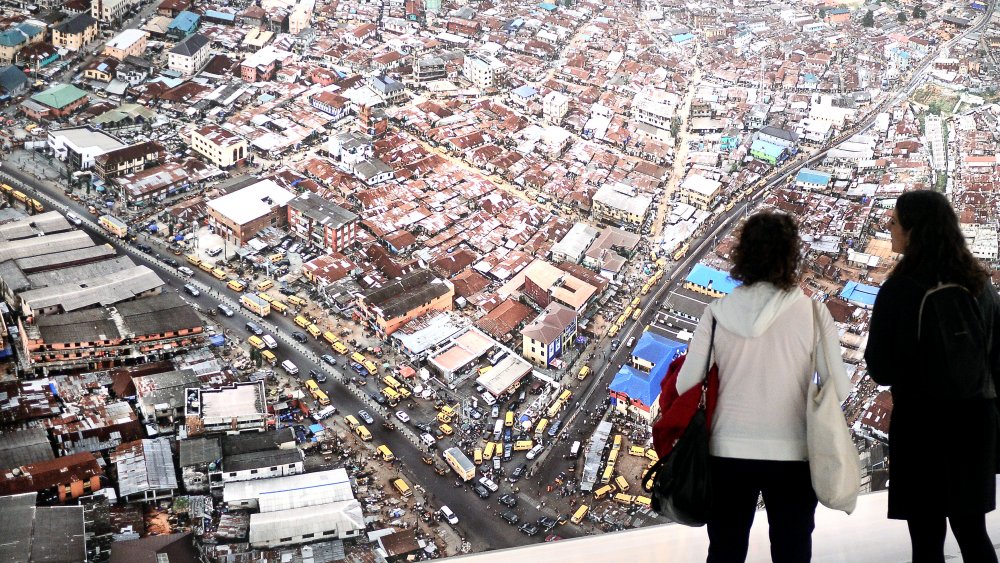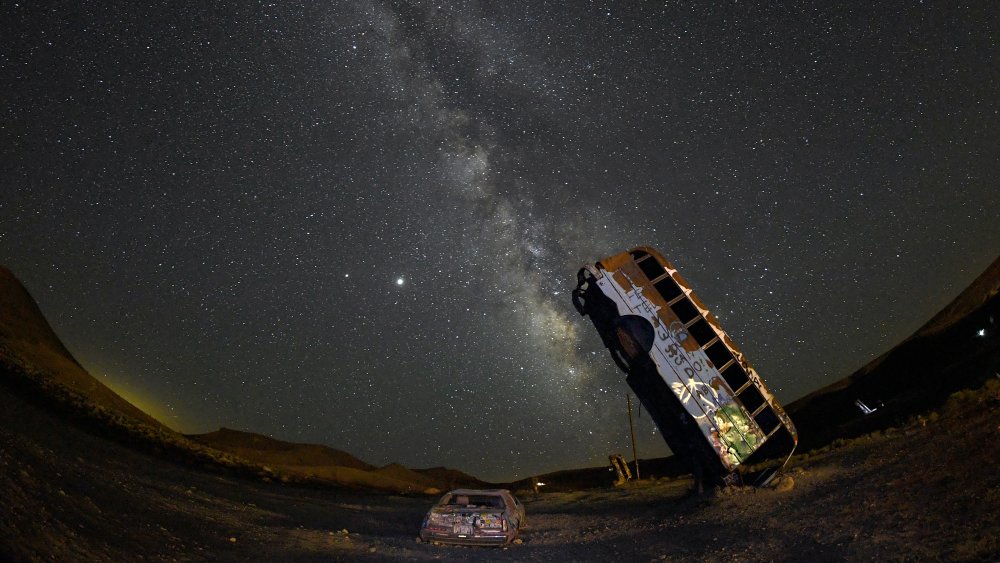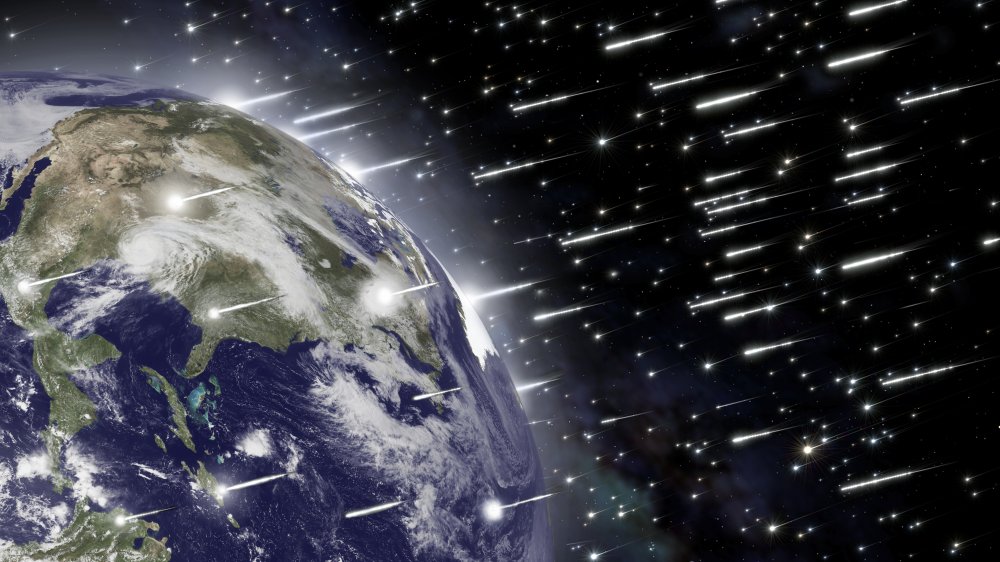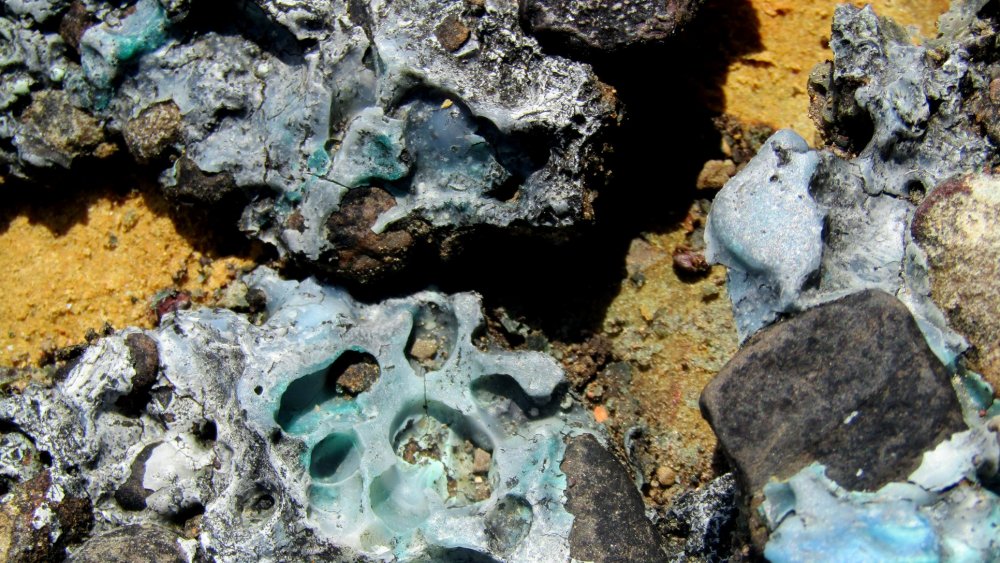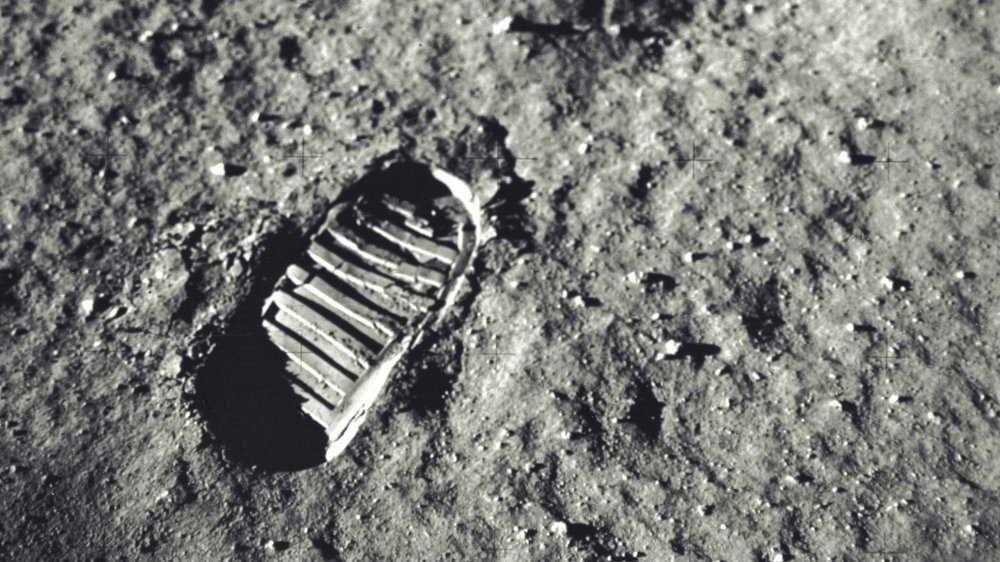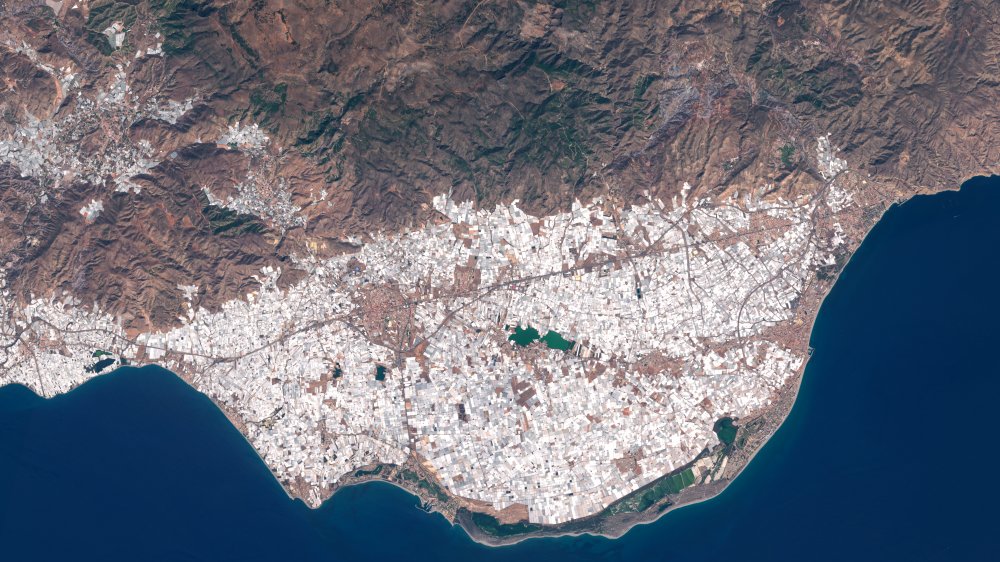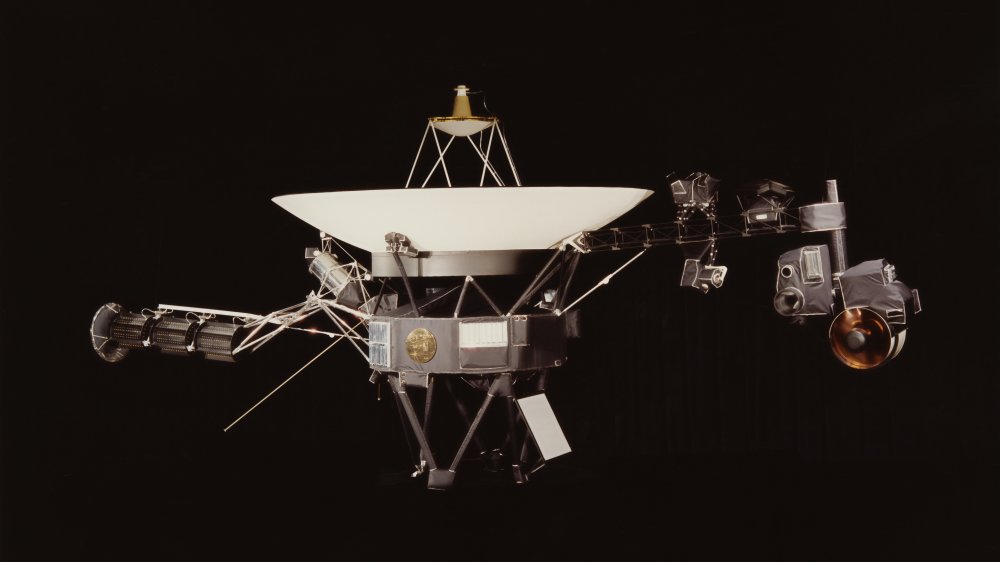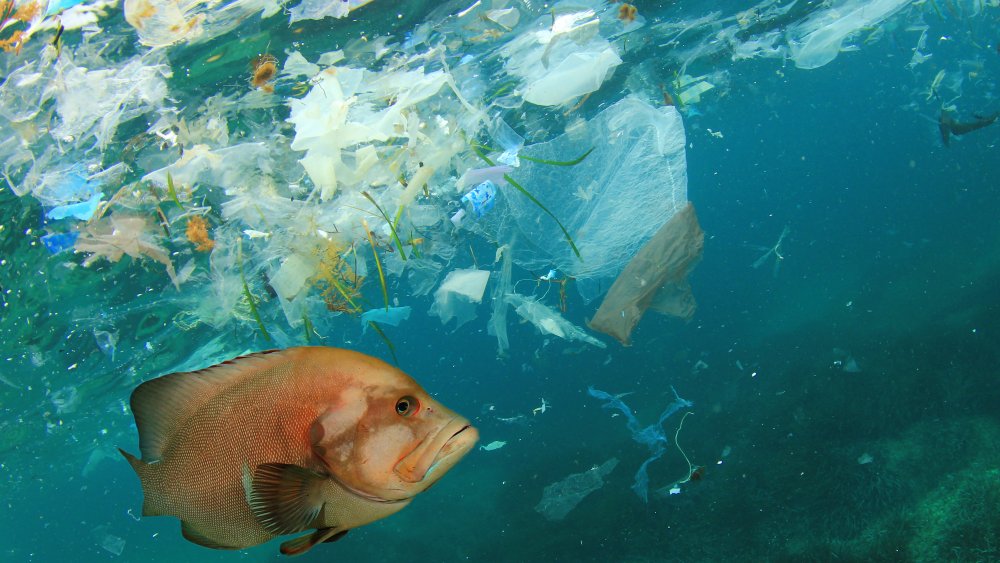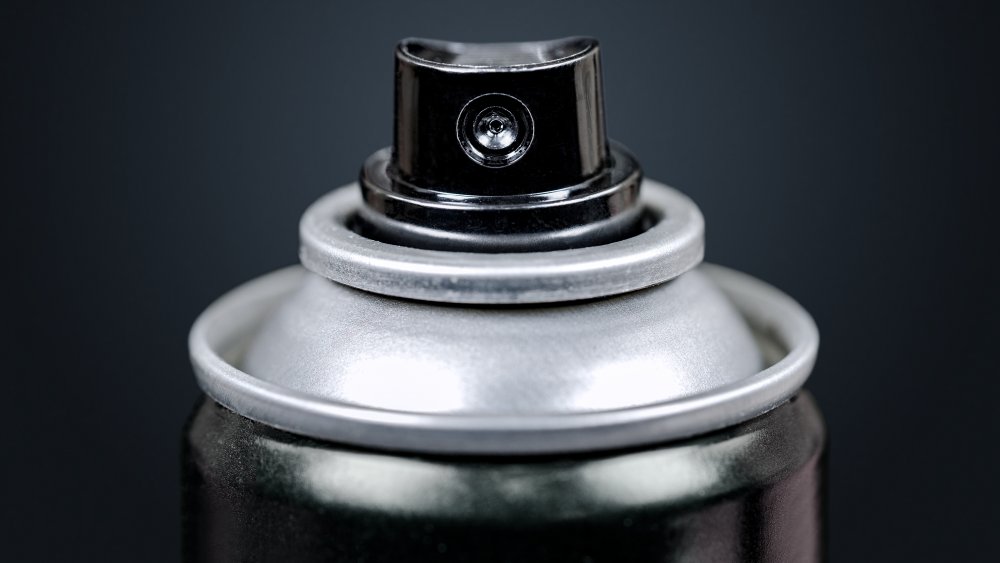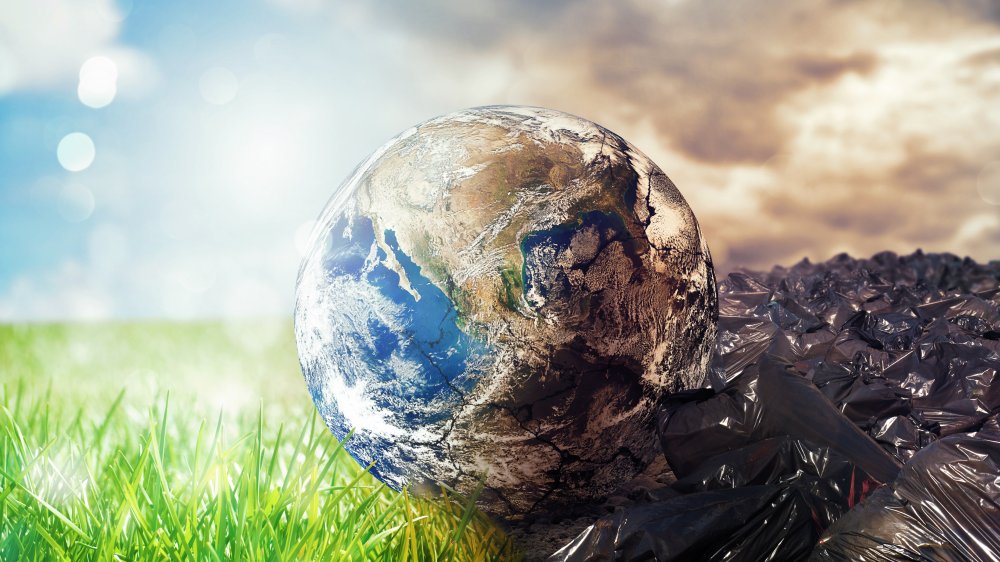The Truth About How Much Junk Humans Have Created
How do you define humankind? Sure, there's the biological definition, and the whole thing about having thumbs, but what really makes us, well, us? You could argue that modern humans really started defining themselves when they started making tools, and now? Today, we've taken that to the extreme.
The human race makes a shocking amount of stuff, and here are a few fun statistics for you. In 2014, The Los Angeles Times estimated that the average US household has a whopping 300,000 items in it. Insane, right? It gets better. Consider this: according to The Telegraph, the average 10-year-old (in 2010) had 238 toys... but only actually played with around a dozen of them. You can't just blame kids, either: in 1930, Forbes says that most women owned about nine outfits. Today, that average is up to somewhere around 30.
Think education is expensive? How about this little tidbit from Psychology Today: Americans actually spend more money buying watches, jewelry, and shoes than they do on education. Around two-thirds of the American economy is based on "consumer goods", and that's another term for "crap."
Do some more digging, and you'll find that the human race has made, invented, manufactured, and thrown away a mind-numbing amount of stuff ... so let's talk honestly about all our junk.
30 trillion tons of junk
New stuff is getting made all the time, so it's impossible to say just how much man-made stuff is on our planet right ... now. Or now. Now? There's more.
So let's go back a little, to 2016. That's when a group of researchers decided to try to figure out just how much stuff we've put on the planet, and according to the findings in The Anthropocene Review, it's a massive number: we've manufactured and made about 30 trillion tons of stuff.
That's so large it's a little abstract, so let's break it down. According to the Terraton Initiative, one trillion tons is about the same as nine Great Walls of China, or 83 Great Pyramids. It's also about the same as 6,000 Washington Monuments, so 30 trillion? That's 180,000 Washington Monuments of stuff.
Here's some more food for thought: in 2017, Scientific American reported that an iceberg the size of Delaware had broken loose and was on the move. They estimated that to weigh around a trillion tons and don't worry, it gets worse.
In 2020, researchers from University College London, Leeds, and Edinburgh universities discovered (via The Guardian) that between 1994 and 2017, 28 trillion tons of ice had vanished from the earth. That was pretty much in line with some "worst-case" scenarios put forward by the Intergovernmental Panel on Climate Change. It's almost like we're replacing our natural world with man-made junk.
The development of the technosphere
Way back in whatever year of school you took earth science and biology, you probably learned that the earth is made up of "spheres." The geosphere is the rocks, the biosphere is the part that can support life, the hydrosphere is the watery bits, the atmosphere is the gases, and the cryosphere is the ice at the poles.
There's a new kid on the block now, and it's called the technosphere. According to Seeker, the technosphere is defined as all of the stuff man has made — and wasted. If we could spread the whole thing out evenly across the planet, we'd get a literal sphere that's a few inches thick. Every square yard would weigh around 110 pounds. That's a lot of crap.
There's a word for all our junk, too: technofossils. And we're nothing if not creative. If we were to try to categorize man-made objects in the same way we categorize biological forms, we'd need more than a billion categories. It's more complicated than you might expect: after all, all of the 6.8 billion phones on the planet could easily be split into thousands of different "technospecies." And according to Jan Zalasiewicz of the University of Leicester, technofossils now outnumber the planet's living species.
All our junk is defining a new geologic age
National Geographic says that we can also look at this on a geologic scale. The earth is around 4.5 billion years old, and that time has been divided into geologic eras. The Paleocene, for example, was when primates first came on the scene, and before that was the Cretaceous, the Jurassic ... you get the idea. And according to experts at the International Geological Congress, we've already caused another geological age to start.
Jan Zalasiewicz, a geologist from the University of Leicester, says (via The Guardian) that the geologic age known as the Anthropocene actually started in the 1950s, and it was kick-started by the emergence of the nuclear age. Nuclear tests spread radioactive elements all over the globe, and they also say there were a few other contenders for "ground zero": the spread of plastic pollution, soot, and the development of concrete. Also an important, era-defining thing? The domestic chicken. Go figure!
But this isn't good news: at the heart of the matter is massive change — change that's happening because of all the stuff we're making. Chris Rapley, a climate scientist from University College London, put it this way: "If [we] were crew on a smaller spacecraft, it would be unthinkable to interfere with the systems that provide us with air, water, fodder, and climate control. But the shift into the Anthropocene tells us that we are playing with fire."
How much junk is in orbit around us?
Ever wonder why aliens haven't made confirmed, large-scale contact with us? It might be that it has something to do with the fact we're pretty much living in the garbage dump of the solar system.
According to National Geographic, the immediate space around our planet is filled with a shocking amount of man-made stuff. They estimate that there are more than 23,000 pieces of space junk that are larger than 4 inches in diameter. When you start looking at smaller pieces, well, you'll need more fingers and toes: there's around half a million more of those smaller fragments in orbit around us. The oldest pieces go back to the 1950s, and while there are things like defunct satellites up there and also tools and garbage bags. Like, a lot of garbage bags. And a lot of human waste, too, because unlike cats, humans will poop anywhere.
The Department of Defense tracks and catalogs objects big enough to be deemed threats, and there are more than 21,000 of those bad boys on their literal radar (as of 2017). NASA, meanwhile, says that there's so much junk in orbit around us that "debris avoidance maneuvers" are a regular part of space flight of any kind. It's not uncommon for the crew of the International Space Station to take shelter in the lifeboat Soyuz: sometimes, they just can't dodge it, and it's better safe than sorry.
What goes up, well, is it coming down?
There's an old saying: What goes up, must come down. What about all the junk that's in orbit around us? Is that going to come down?
According to the Natural History Museum, junk can potentially stay in orbit around us for up to thousands of years. But there are some major problems: large pieces of space debris — like defunct satellites — have been known to collide with other bits of garbage and make (you guessed it!) more garbage. What's also making more garbage? The countries that use their old satellites to practice blowing things up with missiles.
In 2009, two of these satellites (the US's communication satellite Iridium 33 and Russia's satellite the Cosmos 2251) collided at a speed of around 22,300 mph and burst into a debris cloud about 500 miles above Siberia. According to National Geographic, that's not going to be a singular occurrence. The majority of the debris sits in a low orbit (within 1,250 miles of the planet's surface), and we're just making more. In 2007, India destroyed a low-altitude satellite and the debris will, inevitably, come down. So perhaps a hat is in order?
NASA scientist Donald Kessler predicted something even more dramatic for all our space junk. In 1978, he put forward the theory that we'd eventually hit a breaking point, and all our space junk would have gotten so thick that nothing could safely orbit the earth... so we've got that to look forward to.
There's a new kind of rock, and it's made from plastic
We put an insane amount of plastic into the environment, and the numbers are eye-opening. According to Surfers Against Sewage, humankind produced around 320 million tons of it in 2016. Now, compare that to 1950, when we made just 1.5 million tons. And that 320 million number? That's predicted to double by 2034. Plastic doesn't weigh that much, so it's not really surprising that about 8 million pieces enter the ocean every day, and all those pieces are actually forming a new kind of geologic phenomenon. In other words, rocks.
In 2014, an oceanologist named Captain Charles Moore discovered a new type of rock was forming on Kamilo Beach in Hawaii. The rock — which LiveScience says has been named plastiglomerate — forms when plastic melts and then solidifies around and in other kinds of rocks and sediment, like shells, coral, and sand.
The plastic, they add, is usually melted by people who are burning their garbage, or doing something like, say, throwing a bottle into their campfire ... at least, in Hawaii. In other places where volcanoes are more active — like Iceland and the Canary Islands — it's lava that's melting the plastics to integrate with the rocks. And given that these new rocks are much, much denser than plain ole plastic, experts say they're likely to be preserved in the geologic records and give future generations a good look at the early 21st century's plastic pollution problem.
We've left so much on the moon
Putting a man on the moon was a pretty impressive achievement, but where there's man, there's man-made crap that gets left behind.
Some of it, says The Atlantic, isn't entirely crap but items of a touching and personal nature. There's a patch from the Apollo 1 mission, for example, which had been scrapped after three astronauts died during training. There's also a photo of astronaut Charles Duke's family, a sculpture left as a tribute to the Americans and Soviets who died in the space race, and other medals, pins, and plaques.
Sentimental? Sure. But all the man-made junk on the moon adds up to around 400,000 pounds, and that includes what remains of around 70 probes and craft we've deliberately crashed after they were no longer useful ... it's easier than paying to bring it home, after all. (And we've done the same thing on other planets, too.) What else have we left? Blankets, backpacks, empty containers from hygiene kits and food packets, tools like hammers and rakes, used wet wipes, and perhaps the grossest of all, 96 bags of human biological waste. Neil Armstrong and Buzz Aldrin left about 100 things behind just on their visit. Way to set the tone, guys.
Man-made objects visible from space
In 1932, Ripley's Believe It or Not! made the claim that you could see the Great Wall of China from space, and today, that's been largely debunked as a total myth. (Unless, says LiveScience, you're in a low enough orbit and it's a clear day, but in all fairness, you can see a lot of other things at that point, too.)
The BBC says there's a handful of things that can be seen from space, and we're not talking low orbit. Many are naturally-occurring: the River Thames, the Amazon River, the Himalayas, and the Grand Canyon. But there are a few noteworthy, man-made objects you can see, too. One biggie? The Great Pyramid in Egypt. Another, perhaps more surprising biggie? The remnants of Chernobyl. Photos taken from the Endeavor during its 16th orbit in 1994 (via NASA) clearly show the very visible cooling pond and reactor complex.
Also visible? A massive, 185-square-mile greenhouse complex in Spain called Mar de Plástico. The complex, says Bloomberg, was started in 1963 and has since grown so large that the reflective surface is helping the area offset the effect of global warming. According to Geography Fieldwork, other areas in Spain have seen skyrocketing temperatures while Almería has leveled out — in large part thanks to what's essentially a massive, plastic mirror reflecting the sun back away from the planet.
The most distant man-made object
So, we know we've strewn our Funko Pops and Swatch watches and plastic water bottles and beer cans all over the earth, but exactly how far away has our junk traveled?
According to EarthSky, the farthest man-made object from Earth is the Voyager 1. In 2018, the spacecraft was more than 13 billion miles away, and for a little perspective, we're just 93 million miles from the sun (via CalTech). And the moon? That comes about 225,700 miles away at the closest point (via Space). So Voyager? That's a mind-numbing number of miles away.
It's still going, too: in about 40,000 years, it's going to pass within spitting distance of a star called Gliese 445 and unfortunately, it'll be no longer operational at that point. (Whether or not anyone will be left on Earth to care, that's another matter entirely.) Voyager 2 isn't too far behind: that's around 10.5 billion miles away, and in the same time frame, it's going to pass near another star called Ross 248. At least any life forms will know which direction it came from, and where to look? They can find our rocks made of plastic pollution, and that'll be exciting.
There's an insane amount of garbage in the oceans
There's an old saying that goes something along the lines of, "Out of sight, out of mind," and that seems to be the case with a lot of our junk.
When we throw something away, we expect that it's going ... well, somewhere. A landfill, maybe? Incinerator? But a shocking amount of it ends up getting dumped into the ocean. According to Conservation International, we dump around 8 million metric tons of garbage into the ocean every year, and that's added up to around 17.6 billion pounds of junk that's floating through our planet's waters. That's another number that's almost too big to imagine, so we'll put it this way: that's about the same weight as 57,000 blue whales, and you've seen those things, right?
Oceans currents have gathered trillions of pieces of garbage into five massive garbage patches and the largest — the Great Pacific Garbage patch — is literally a mass of floating trash as far as the eye can see: it covers an area that's about twice the size of Texas.
And we're only making more of it. Estimates suggest that by 2050, we'll have made and dumped so much garbage in the world's oceans that our man-made junk will outweigh all the fish trying to live there.
Gases weigh more than you think, too
We all learned in chemistry class that gases occur naturally — we wouldn't survive without them, after all. But there are a number of gases that have been created solely from human activity, and some are kind of surprising.
Some are things like chlorofluorocarbons, which mostly have no natural source. Instead, we manufactured them for use in things like refrigeration units, cleaning solvents, and aerosol propellants. We're frowning on them these days, given that we now know they destroy the ozone, but hey, they're still out there.
The British Geological Survey says that since the mid-18th century that we've been manufacturing insane amounts of gases, and there are a few major sources. There's the burning of fossil fuels, of course, but around a third of gases come from the farming, agriculture, and forestry industries. About 5% of global CO2 emissions come from that very specific industry: cement production.
On an individual level, Columbia University says that the average American is actually responsible for more gas than trash. In a single year, it's estimated that each and every person releases around 36,700 pounds of carbon dioxide into the air. That Great Pacific Garbage Patch, the one that's twice the size of Texas? That's been estimated to weigh around 87,000 tons, while the US created 7,600,000,000 tons of CO2 in 2014 alone. There's some food for thought.
Earth has been officially classified as a toxic planet
If space is infinite, there's got to be alien life out there, right? So you'd totally think that extraterrestrial life would have made some kind of official contact by now, the kind that doesn't involve just one guy in a pickup truck. Maybe they're avoiding us because humankind has made Earth downright toxic.
And that's not an exaggeration. In 2017, researchers (via Phys.org) classified Earth as a "toxic planet." Why?
They defined Earth's toxicity by a few factors, including the fact that humankind is responsible for putting around 250 billion tons of harmful substances into their surroundings each and every year. Estimates suggest that not only are there more than 144,000 chemicals in existence that are purely man-made, but there's about 2,000 more invented each year.
And it's more serious a problem than you might think: the World Health Organization has found that one in every four humans will die because of man-made junk. Whether that's radiation, pollution, climate change, or exposure to some of those aforementioned chemicals, at least a quarter of us are dying from our great problem with junk. It's no wonder the aliens stay away.
